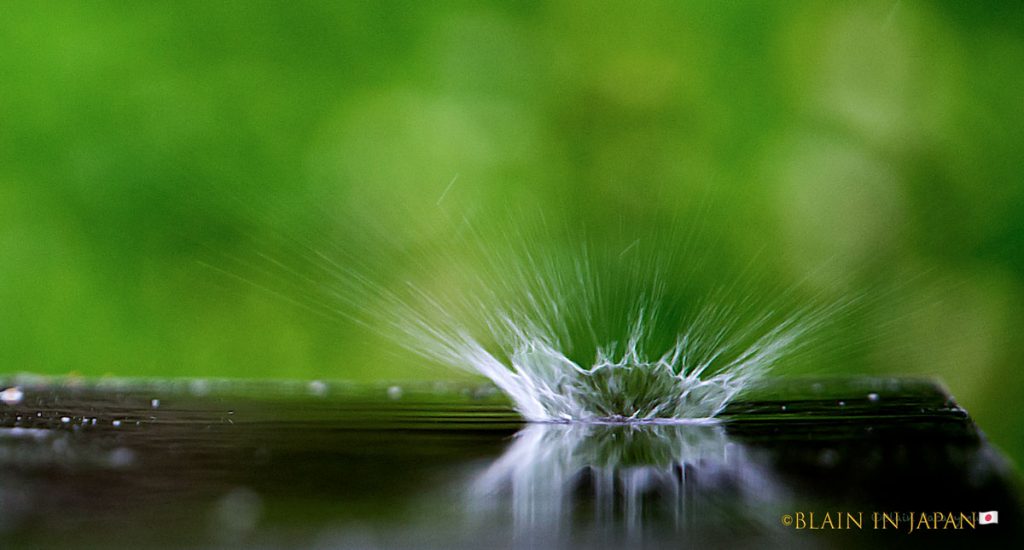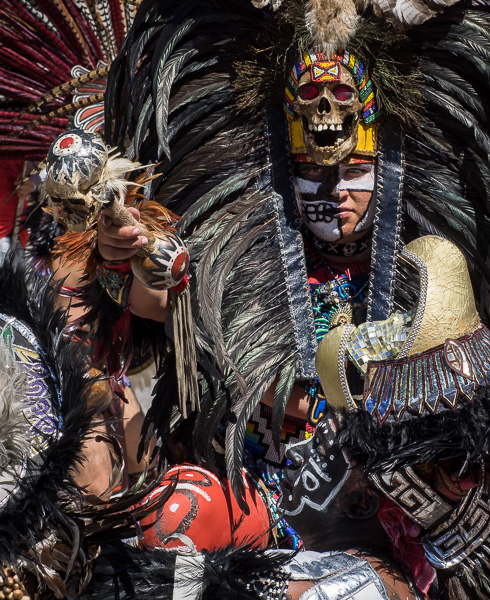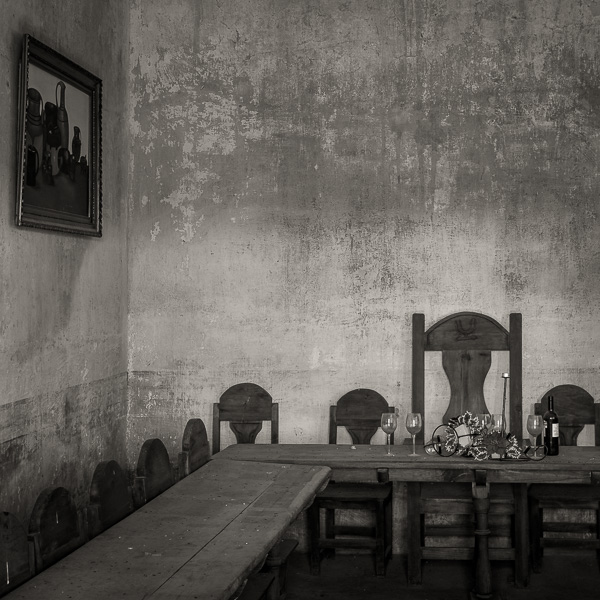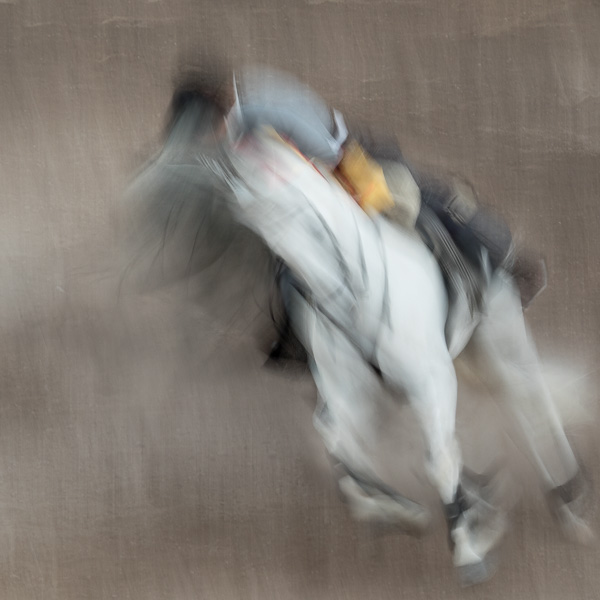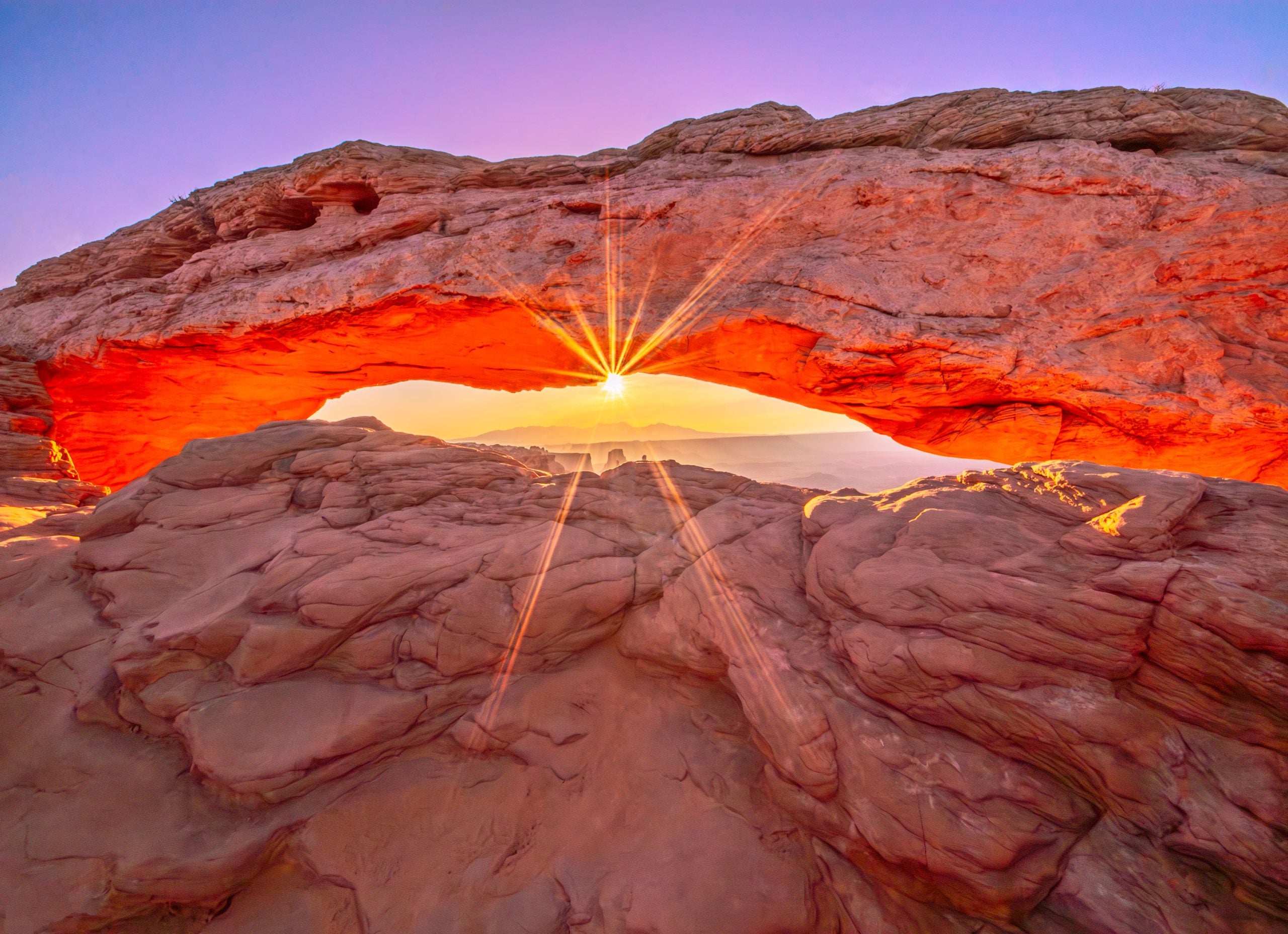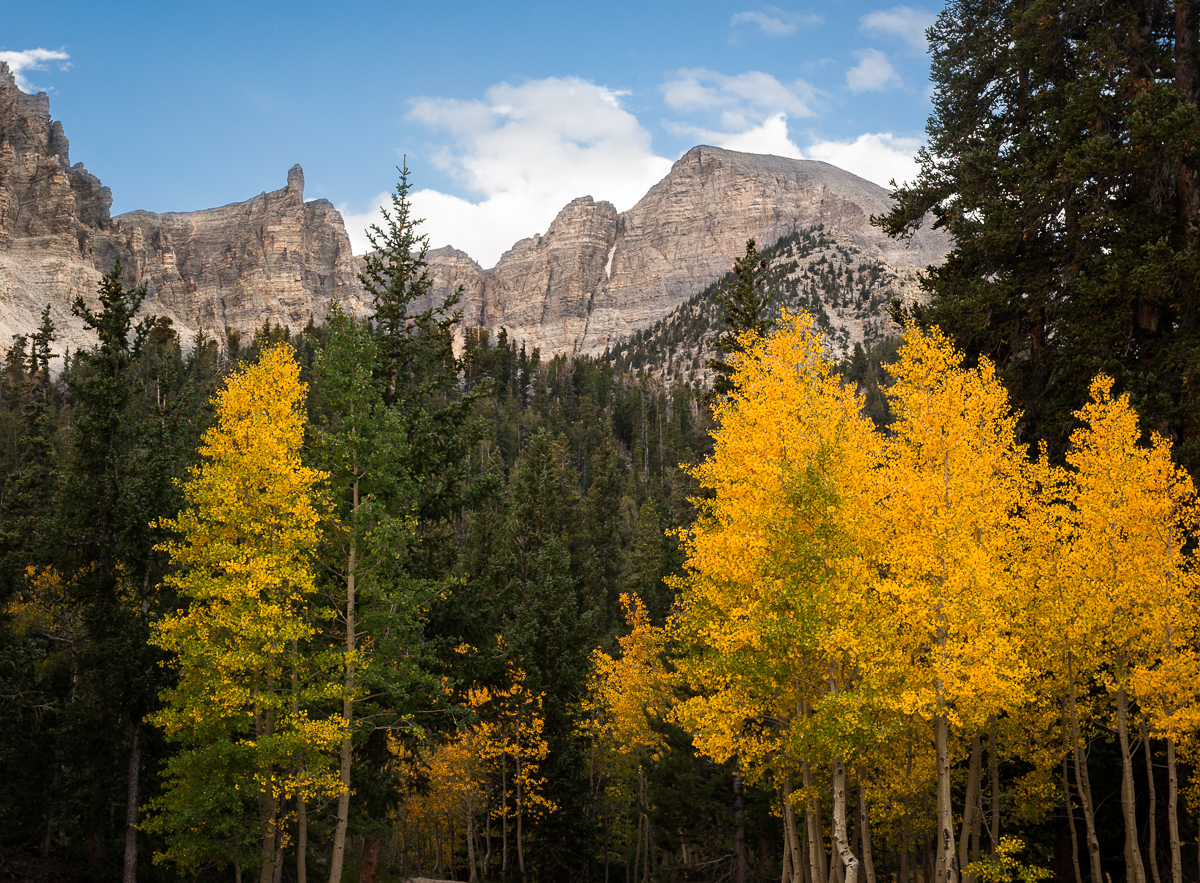
Wheeler Peak and Aspen Grove
Great Basin National Park routinely ranks among the least visited national parks in the lower 48 states despite being near the geographic center of the Great American West. This central location is not the advantage it might seem, since it places the park at least a five hour drive from Reno, Salt Lake or Las Vegas. The most popular access is off Highway 50, named “the loneliest road in America” byLifemagazine. To many photographers and adventurers, however, remote location and lack of crowds make an area more appealing, and Great Basin NP does not disappoint. It provides dramatic mountain peaks, bristlecone pines, aspen groves, an extensive cave, a six story arch, and some of the darkest night skies in the West, all with day-hike access.
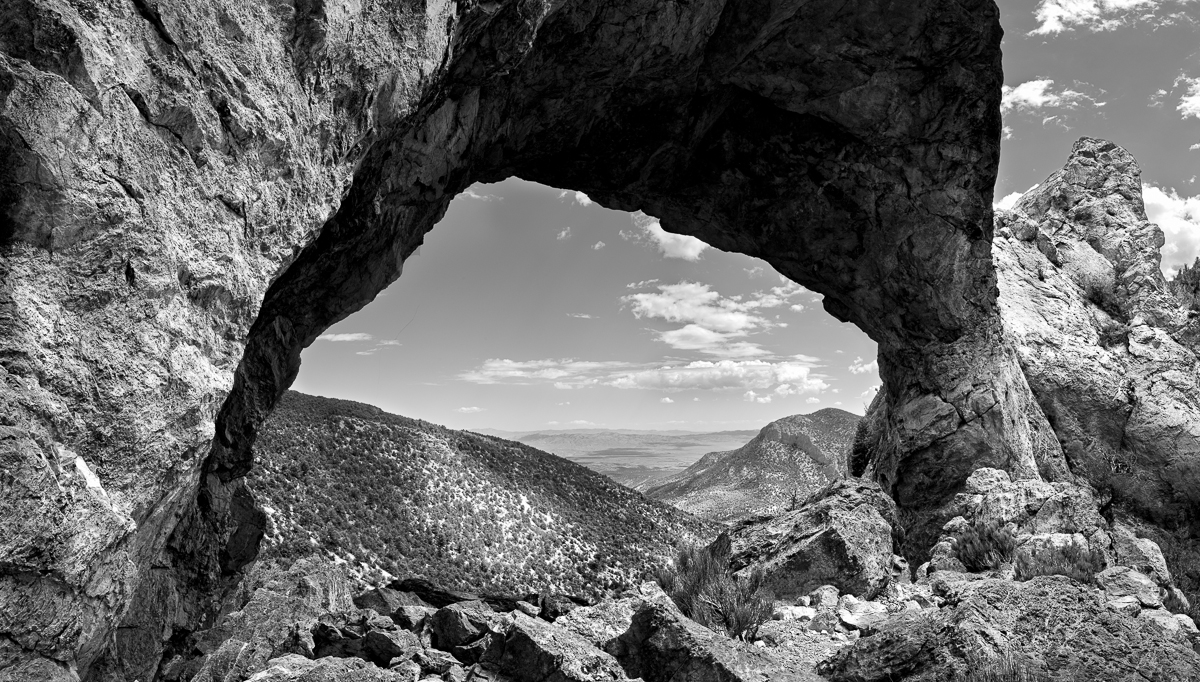
Lexington Arch Panorama
(Seven images with focus changes stitched)
I have fond memories of this area before it was a National Park, when it was just the Snake Range. My father spent ten years mapping the geology of the Snake Range when I was growing up. During those summers, my family camped in remote canyons close to where my dad needed to work. I remember seeing caves and Indian ruins he found, meeting Basque sheepherders, listening to stories of mountain lion encounters, and developing my own strong thirst for adventure. We were befriended by the local ranchers, and many of my best childhood memories are of their warmth, humor and hospitality. I also learned to love the sensory richness of nature-at-its-best, and that has informed my passion for wilderness and photography ever since. While most of the people I knew are no longer here, returning to begin photographing these places I remember so well has been like going to a reunion and seeing old friends.
Lehman Caves
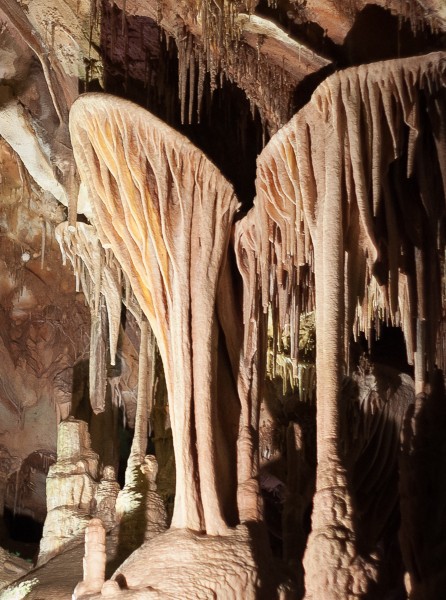
Lehman Caves
The focal point of Great Basin National Park is Lehman Caves and the Wheeler Peak Scenic Drive. This is the only part of the park maintained to Yosemite standards by the Park Service, and it gets the vast majority of attention from visitors. From the Visitor Center in the town of Baker, Nevada, the road climbs to the Lehman Caves facilities. The entrance to Lehman Caves was accidentally discovered in 1883 by Absolom Lehman, a miner who turned his discovery into a profitable tour business. Despite some souvenir taking during those early days, the cave is stunning and extensive, and $10 for the 90 min. tour may be the bargain of the National Park system. Tripods are not allowed on the regular tours, but a personalized photo-tour is available for an additional fee.
Wheeler Peak
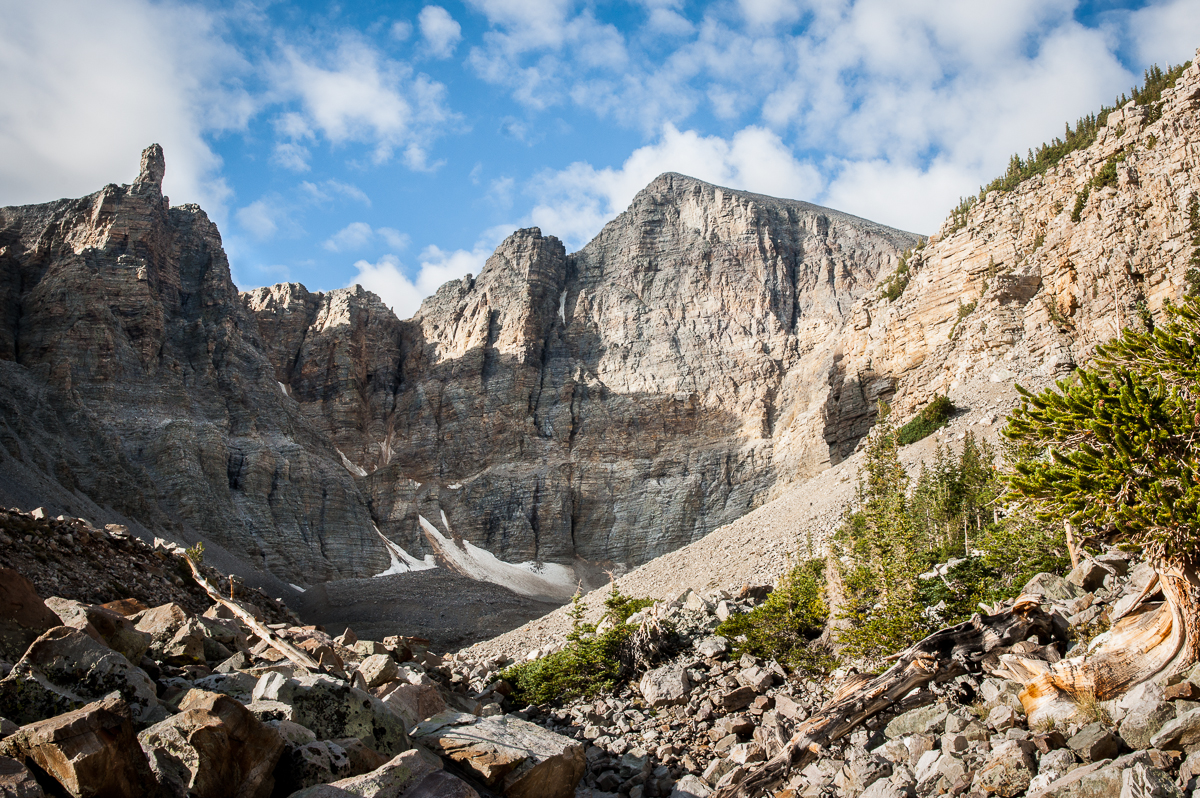
Wheeler Peak and Glacial Moraine
At 13,063 ft., Wheeler Peak is the second highest mountain in Nevada, and its cliffs shade the remnants of one of the southernmost glaciers in the United States. Starting near Lehman Caves, the ten mile Wheeler Peak Scenic Drive climbs 3400 feet past hundred-mile viewpoints to the Wheeler Peak trailhead and campground at nearly 10,000 feet. A non-technical route from here leads to the summit, and other trails will take you to the lakes and glacial moraine below. The distances are not too challenging, but with a backpack of photo-gear, the altitude may sneak up on you. I recommend photographing in the morning, since the Wheeler Peak cliffs are shaded in the afternoon. And don’t forget the potential for afternoon thunderstorms, which can become a deeply personal experience at that altitude.
Bristlecone and Aspen
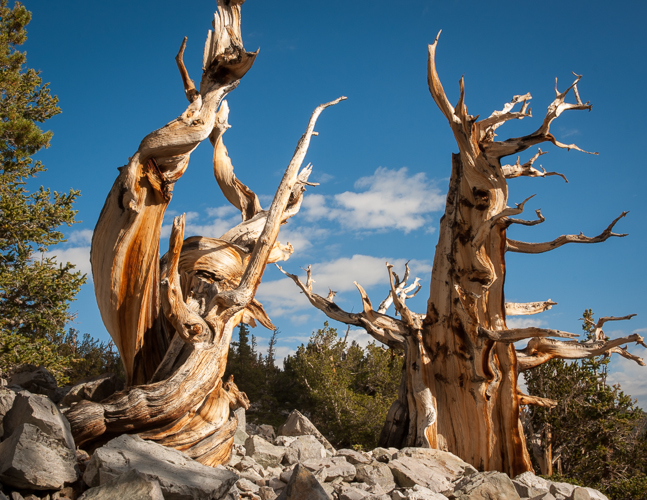
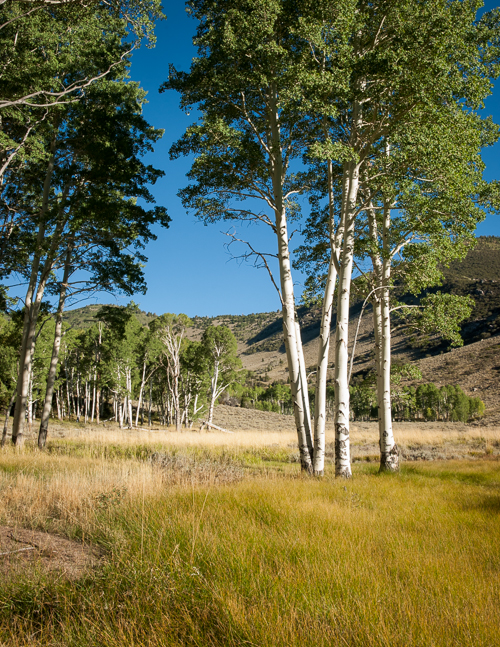
Bristlecone pines are like those 105 year old people who live in an impossible highland village, their deep wrinkles a testament to life under the worst conditions, and Aspen are like a troupe of smooth, swaying dancers with soft skin and colorful costumes. Great Basin NP brings these extremes of the tree world together on the same stage. On the glacial moraine below Wheeler Peak there are acres of ancient Bristlecone pines, with an informative side-trail for Bristlecone viewing rookies. If you want to get closer to the rest, bring some sturdy boots to avoid twisted ankles as you make your way across the unstable moraine. There is another Bristlecone forest on top of Mt. Washington, a few peaks to the south. The access is from Spring Valley, on the west side, and the road is not for the faint of heart. I remember riding along as my father had to take every other switchback in reverse. Large Aspen groves are found on the slopes north of Wheeler Peak, and in the higher parts of most canyons, especially Snake Creek and Baker Creek. Depending on the weather, the leaves turn at higher altitudes in late August, and lower down the mountain continue for about a month.
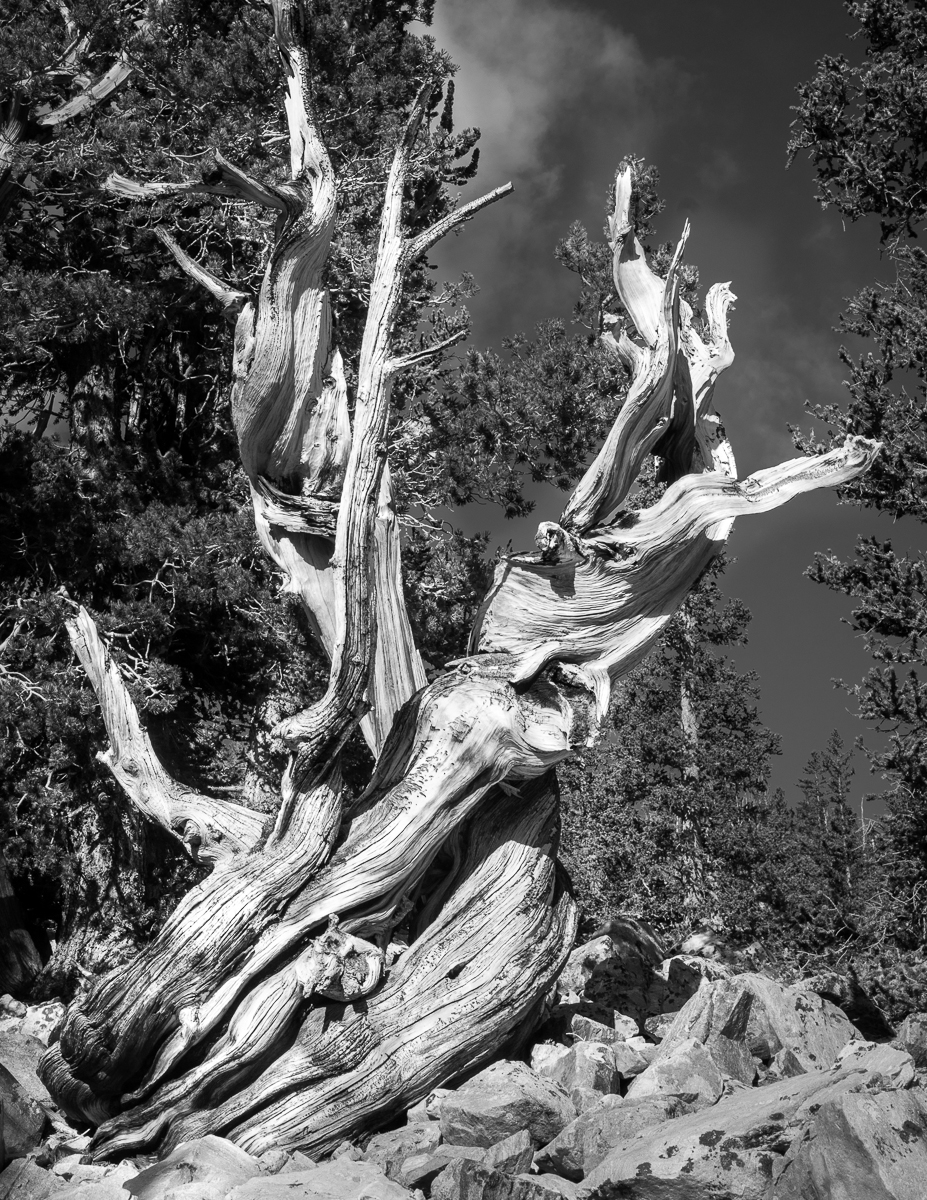

The oldest single living organism ever discovered was “Prometheus”, a Bristlecone Pine that grew near Wheeler Peak. Cut down by a graduate student and Forest Service personnel in 1964 for research, it was determined to be at least 5000 years old.
Roads Less Traveled
South of Wheeler Peak are a number of canyons featuring hiking and camping, great scenery, and few people. The most significant landmark is Lexington Arch, an unusual limestone arch likely the uplifted remnant of an ancient cave. Other than that, the photographic opportunities are more subtle, fitting nicely with the solitude and slow pace of visitation. There is a refreshing lack of viewpoints and tripod holes, but no shortage of raw beauty. My favorite is Snake Creek canyon with a number of single, primitive camp spots. They are quiet and well out of sight of others, so ideal conditions for stargazing and astrophotography.
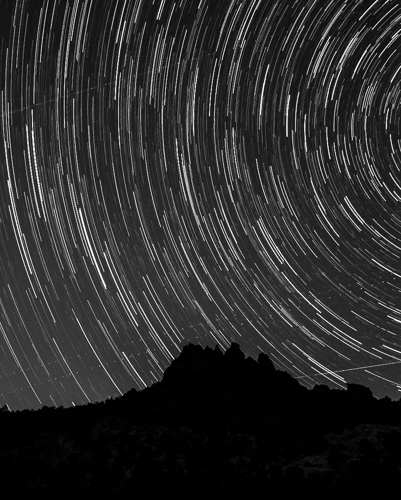
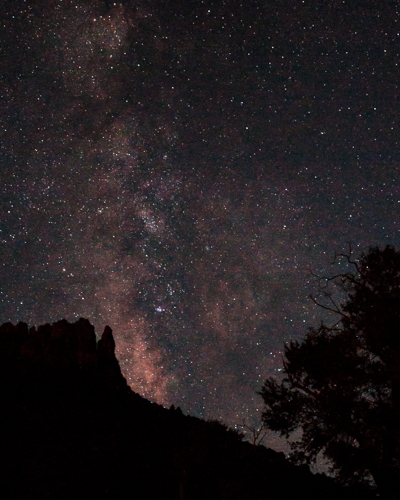
Snake Creek Star Tracks Milky Way Over Snake Creek
(16 images stacked, each 180 sec at f/3.2, ISO 160, 30mm focal length) (10sec at f/2.8, ISO 3200, 35mm focal length)
Many of the Snake Range canyons contain log cabins, abandoned mines, and other historical artifacts. Evidence of the miners and Basque sheepherders who worked in these mountains over a century ago is still found where they carved their name and the year into aspen trees. If you are willing to hike and are good at distinguishing hunting blinds from random rows of rocks, you may find remnants of the Shoshone Indians who used to populate the area. Wildlife is varied and abundant in Great Basin NP. LIke most of the west, deer, coyotes, ground squirrels, hawks and small birds are not hard to find and photograph, and patience offers the chance to see pronghorn antelope, bobcats, mountain sheep and eagles. Summer wildflowers are best near the lakes below Wheeler Peak, and along the Baker Creek Trail.
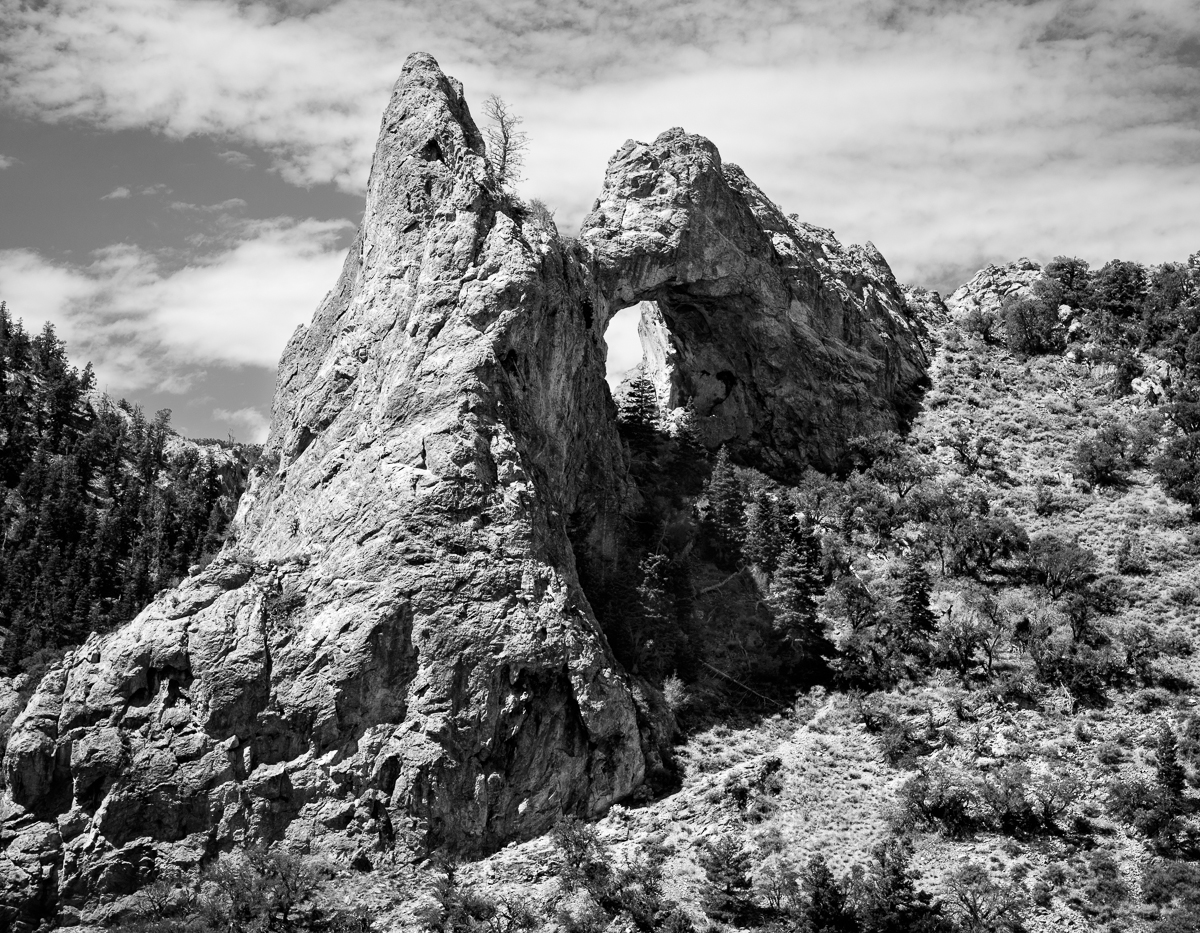
Lexington Arch
Getting There
Baker, Nevada, in Snake Valley to the east, is the designated gateway to Great Basin National Park, featuring a couple of pleasant motels and restaurants. There are some ranches in the valleys, but their grazing rights were limited by the park, so there is less local commerce than years ago. The nearest groceries and hardware are in Ely, over an hour west on highway 50, and the nearest Wal-Mart and Home Depot are in Cedar City, Utah, over three hours south. And if you really must stay in touch with your publicist or track your fantasy football team, beware. Despite the illusion of civilization, there is absolutely no cell coverage. This seems fitting in the quiet beauty of this park.
View Larger Map
March, 2013
Great Basin National Park Web Site: http://www.nps.gov/grba/index.htm
A well written and illustrated guide book: http://www.amazon.com/Exploring-Great-Basin-National-Park/dp/0982713045/ref=pd_bxgy_b_img_y
Great Lakes Airlines has scheduled service to Ely airport where car rentals are available: http://www.flygreatlakes.com/
More photography by the author can be found at: www.donwhitebread.com
Contact Don at: [email protected]
All images made with Sony a900, Sony/Zeiss 24-70mm f/2.8, or Minolta 50mm f/1.7
Read this story and all the best stories on The Luminous Landscape
The author has made this story available to Luminous Landscape members only. Upgrade to get instant access to this story and other benefits available only to members.
Why choose us?
Luminous-Landscape is a membership site. Our website contains over 5300 articles on almost every topic, camera, lens and printer you can imagine. Our membership model is simple, just $2 a month ($24.00 USD a year). This $24 gains you access to a wealth of information including all our past and future video tutorials on such topics as Lightroom, Capture One, Printing, file management and dozens of interviews and travel videos.
- New Articles every few days
- All original content found nowhere else on the web
- No Pop Up Google Sense ads – Our advertisers are photo related
- Download/stream video to any device
- NEW videos monthly
- Top well-known photographer contributors
- Posts from industry leaders
- Speciality Photography Workshops
- Mobile device scalable
- Exclusive video interviews
- Special vendor offers for members
- Hands On Product reviews
- FREE – User Forum. One of the most read user forums on the internet
- Access to our community Buy and Sell pages; for members only.





